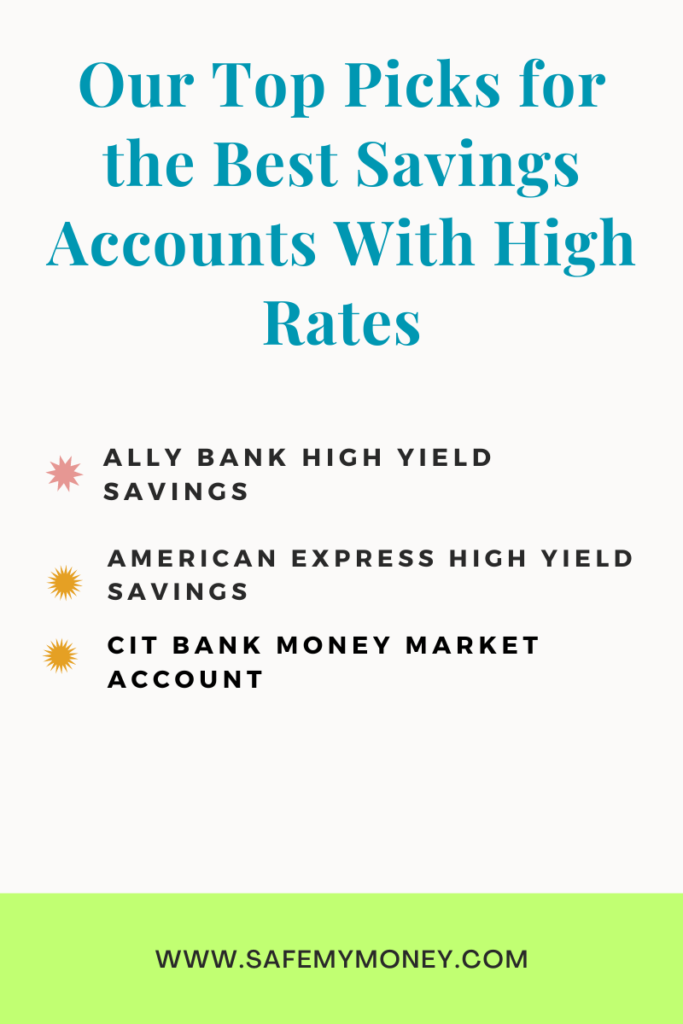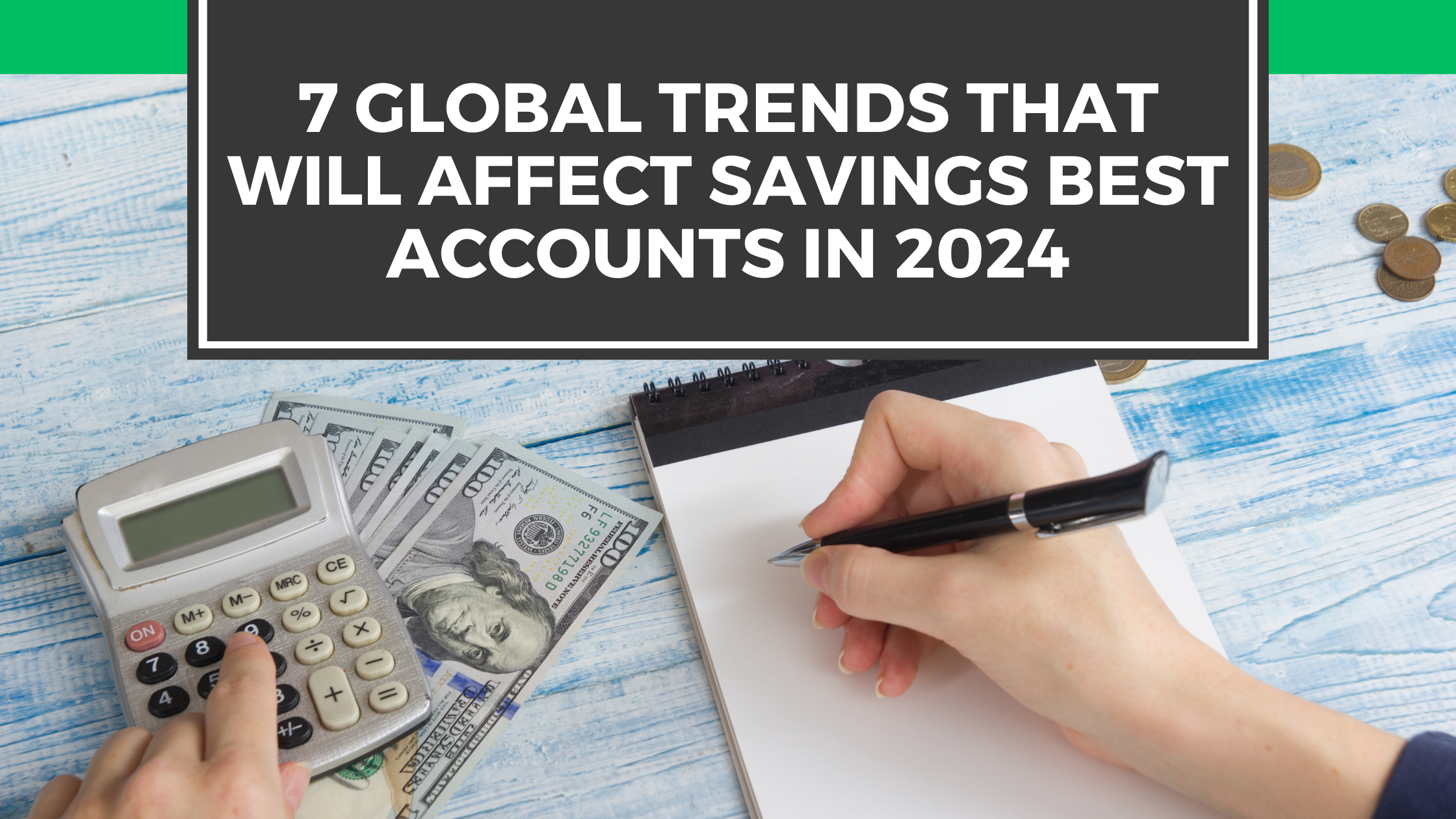Have you looked at your bank statement lately and wondered why you’re earning essentially nothing on your savings? Times are tough, we get it. Interest rates have been at historic lows for years. But that doesn’t mean you should settle for the measly 0.01% APY your big bank is offering. There are plenty of high-yield savings accounts out there that can earn you 10 to 20 times more on your money. Why leave that extra cash on the table when it could be working for you? In this article, we’ll show you the top high-yield savings accounts so you can start earning more on the money you already have. The best part is, it’s not complicated. Opening an account takes minutes and moving your money over is simple. So what are you waiting for? Stop watching your money stand still and put it in high gear with a high-yield savings account. Your future self will thank you.
Read More: 7 Best Saving Accounts For College Students In 2023
What to Look for in a High-Yield Savings Account
If you want to earn more on your savings, it pays to shop around at different banks to find an account with a high-interest rate. Here are some things to consider:
What interest rate do they offer?
The higher the interest rate, the more money you’ll earn. Look for accounts offering 1.0% APY or higher. Even small differences of 0.1% or 0.2% in APY can add up to hundreds of dollars over time.
Are there any fees?
Look for free high-yield savings accounts with no monthly maintenance fees, overdraft fees or minimum balance requirements. Some banks may charge a fee if your balance falls below a certain amount, so make sure any account you consider is truly free.
How often do they compound interest?
More frequent compounding means your money can grow faster. The best high-yield savings accounts compound interest daily, so you earn interest on your interest. Accounts that compound monthly or quarterly won’t earn as much.
Do they have a mobile app?
A good mobile banking app makes it easy to check on your savings balance and transactions on the go. See if the bank offers a highly-rated app before opening an account.
What is their customer service like?
Some smaller online banks may lack robust customer service. Look for reviews mentioning helpful, available support in case you have any issues accessing or using your account. Good service can make a big difference.
With some research, you can find a high-yield savings account that lets your money work harder for you. Compare accounts and choose one with the best rates, no fees, frequent compounding, mobile access and helpful support. Your savings will thank you!
Our Top Picks for the Best Savings Accounts With High Rates
When it comes to high-yield savings accounts, you want the best bang for your buck. The following are our top recommendations based on interest rates, low fees, and reputable institutions:
Ally Bank High Yield Savings
Ally currently offers a very competitive rate of 2.20% APY. They have no monthly maintenance fees or minimum balance requirements. You can open an account with just $5! Ally is an online-only bank, so all your banking is done electronically. If earning a high rate is your top priority, Ally is a great choice.
American Express High Yield Savings
Amex Personal Savings offers 2.10% APY and charges no monthly fees. While their rates may change more often, they are frequently near the top. Amex is a reputable company and a good option if you prefer working with a well-known brand. The minimum opening deposit is $0.
CIT Bank Money Market Account
CIT Bank offers a money market account with 2.15% APY and a $100 minimum opening deposit. They are FDIC-insured for up to $250,000 per account. CIT frequently ranks as a top online bank for high-yield accounts due to its competitive rates and lack of account fees. If you prefer a money market account for the added flexibility, CIT is an excellent choice.
As you can see, there are attractive high-yield options at reputable banks that charge minimal or no fees. Compare the rates and features that matter most to you, open an account, and watch your money grow at a much faster rate! The sooner you make the switch to a high-yield account, the more you stand to earn.

Pros and Cons of Online vs Brick-and-Mortar Banks for Savings Accounts
When it comes to high-yield savings accounts, you have two main options: online banks or traditional brick-and-mortar banks. Each has its pros and cons, so you’ll want to weigh them carefully based on what’s most important to you.
Online banks
Online banks, like Ally Bank and American Express Bank, offer some of the highest interest rates since they have lower overhead costs. Without physical branches, they can pass on higher rates to customers. However, some downsides are:
- No face-to-face interaction. If you prefer speaking to a banker in person, online banks won’t meet that need.
- Typically fewer services. Most online banks focus primarily on savings, checking and CDs. They usually don’t offer mortgages, wealth management, and other full-service banking products.
- Potential security concerns. Some people feel safer conducting banking affairs in person versus online, though online banks do employ strong security measures.
Brick-and-mortar banks
Traditional banks with local branches, such as Chase Bank or Wells Fargo, provide convenient access to your money and face-to-face service. However, rates on savings accounts are often lower due to higher costs of operation. Other cons include:
- Lower interest rates. Brick-and-mortar banks typically offer lower rates on savings and high-yield accounts.
- Higher fees. To offset costs, traditional banks usually charge higher monthly service fees and overdraft fees.
- Limited access. If you move or travel frequently, you may not always have a nearby branch of your bank.
In the end, you need to weigh the pros and cons of online versus traditional banks based on your priorities and needs. Look at both interest rates as well as levels of service to determine what’s most important to you. And you may find that using a combination of online and brick-and-mortar banks for different financial needs may be the ideal solution.
Strategies to Maximize Interest Earnings on Your Savings
To maximize your interest earnings in a high-yield savings account, employ a few simple strategies.
Compare Rates Regularly
Interest rates change over time based on the market and economy. Check your bank’s rates at least once a month and compare them to other high-yield accounts. If you find a better rate, don’t hesitate to switch banks. Even a small difference of 0.10% in APY can add up to hundreds of dollars over the year.
Look for Loyalty Bonuses
Some banks offer loyalty bonuses, like slightly higher rates for depositing and keeping a minimum balance in your account. Ask your bank if they offer any loyalty perks before moving your money. These small incentives, like 0.05% higher APY, may be worth staying put.
Make Regular Deposits
The more money in your account, the more interest you’ll earn. Even if you can’t afford large lump sums, set up automatic monthly transfers to steadily build your balance. For example, depositing an extra $50 to $100 each month can make a big difference in your interest over time.
Consider a CD Ladder
Certificates of Deposit, or CDs, typically offer higher rates than savings accounts. You can create a “CD ladder” by purchasing multiple CDs with different maturity terms, like 1, 2, and 5 years. As each CD matures, reinvest it in a new 5-year CD. This way you have access to your money annually while earning the higher long-term rates. CDs do have withdrawal penalties, so only invest money you won’t need short-term.
Using these strategies consistently can help you earn hundreds more each year in a high-yield savings account. While interest rates are often outside of our control, making the most of the rates currently available is something anyone can do. Compare, set a monthly deposit schedule, look for loyalty perks, and consider CDs for the best rates—your future self with a fatter savings account will thank you!
Frequently Asked Questions About High-Yield Savings Accounts
So you’ve found a high-yield savings account with a great interest rate and low fees—congratulations! Now you likely have some questions about how these accounts work and what you can expect. Here are some frequently asked questions and answers to help you navigate your new high-yield savings account:
How often is the interest rate compounded?
Most high-yield savings accounts compound interest daily. That means the interest you earn each day is added to your principal balance, and then the next day’s interest is calculated on that slightly higher balance. At the end of the month, the interest for each day is added up and credited to your account. Some banks compound interest monthly instead of daily, so check with your specific bank to confirm their policy.
When will I receive my interest payments?
The interest you earn during the month is usually credited to your account and available for you to withdraw within the first few business days of the following month. For example, if you earn $50 in interest for the month of January, that amount should be added to your balance and available to withdraw by February 3rd or so.
Are there any monthly maintenance fees?
Most high-yield savings accounts do not charge monthly maintenance fees as long as you meet their minimum balance requirement, which is typically a relatively small amount like $500 or $1,000. However, some banks may charge fees for excess withdrawals, usually if you make more than 6 per month. Be sure to check with your bank for their specific fee schedule.
Read More: How to Save $1000 This Year With a Simple Money Saving Chart
Can I withdraw money from my account at any time?
Yes, most high-yield savings accounts allow you to withdraw your money at any time without penalty. The money you deposit, plus the interest you earn, is available on demand. However, as mentioned above, some banks may limit the number of withdrawals to 6 per month before charging excess withdrawal fees. If access to your money is important, look for a bank with no limits on withdrawals.
Are high-yield savings accounts insured?
As long as you choose a bank or credit union that is insured by the FDIC or NCUA, your high-yield savings account balance will be insured for up to $250,000 per account. This means your money is very low risk, even if the bank were to go out of business. Be sure to check that any bank you consider is FDIC or NCUA insured before opening an account.
Conclusion
So there you have it, the savings accounts that can help your money work harder for you. Whether you’re saving for a down payment on a house, paying for your kids’ college tuition, or planning an epic vacation, putting your money in a high-yield savings account is a no-brainer. The rates these accounts offer will help your money grow faster without you having to do anything extra. The only thing left to do is open an account and start reaping the rewards. Before you know it, you’ll be earning more and saving faster than ever before. Now isn’t that an easy win? Your future self will thank you for making the most of these high-yield offers.




